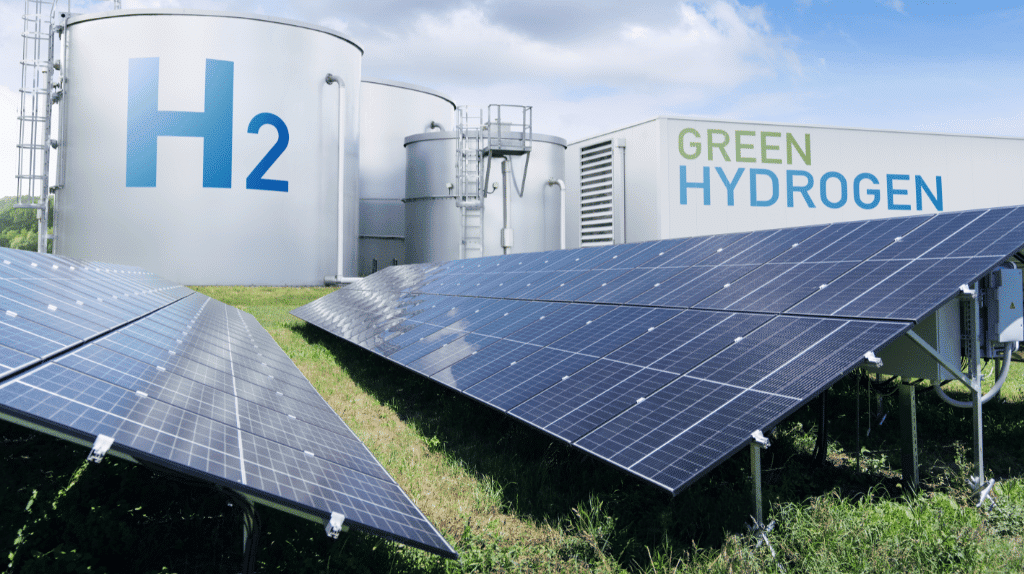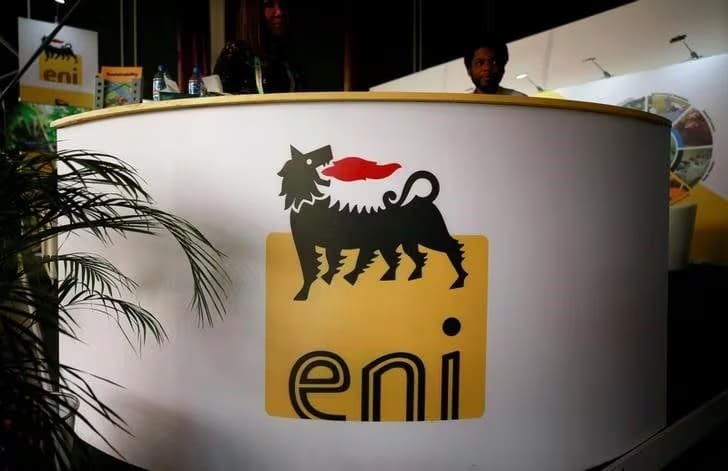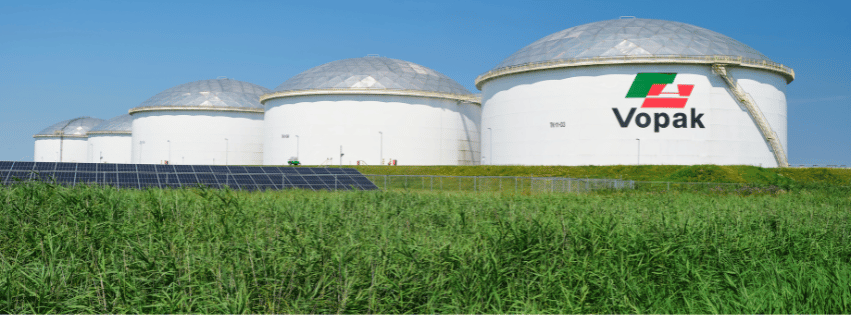Hydrogen is often touted as the “fuel of the future” in a clean energy economy. But to fulfill that promise, we must solve a critical challenge: how to store hydrogen efficiently, safely, and at scale.
Hydrogen is often touted as the “fuel of the future” in a clean energy economy. But to fulfill that promise, we must solve a critical challenge: how to store hydrogen efficiently, safely, and at scale. Why is this so important? Hydrogen can be produced in unlimited quantities from water and renewable electricity (making “green hydrogen”), and when used it emits no greenhouse gases – only water. It also carries more energy per pound than any other fuel, yet as a gas it’s extremely low-density. In practical terms, that means uncompressed hydrogen would need a tank larger than a house to match the energy in a gasoline tank. Effective storage methods are therefore essential to pack enough hydrogen into reasonable volumes for use in vehicles, power systems, and industry. As the International Energy Agency puts it, “Hydrogen is one of the leading options for storing energy from renewables”, potentially at lowest cost for long-term storage over days and even months.
Hydrogen’s role in the global energy transition is multifaceted. It offers a way to decarbonize sectors that are hard to electrify (like heavy industry, shipping, or aviation) and to store surplus renewable power for when the sun isn’t shining or wind isn’t blowing. Many experts see hydrogen storage as the “missing link” that can connect intermittent renewable generation with steady, round-the-clock energy demand. “Hydrogen is today enjoying unprecedented momentum. The world should not miss this unique chance to make hydrogen an important part of our clean and secure energy future,” said Fatih Birol, Executive Director of the IEA. In short, mastering hydrogen storage is key to unlocking hydrogen’s potential as a clean fuel and energy buffer in a net-zero economy.
How (and Why) We Store Hydrogen
Unlike oil or natural gas, hydrogen isn’t found ready-made underground – it must be produced, then stored and transported before use. But storing hydrogen is no light task, despite hydrogen being the lightest element. Under normal conditions it’s a diffuse gas, so engineers have developed various methods to pack hydrogen more densely for storage. Broadly, hydrogen can be stored physically as a compressed gas or cryogenic liquid, or chemically within other materials.
Why go to all this effort? Because effective hydrogen storage allows us to build up reserves of clean energy. For example, surplus solar or wind power can split water to make hydrogen, which is stored and later converted back to electricity in a fuel cell or turbine when needed. This ability to time-shift energy supply is crucial for grids dominated by renewables. Hydrogen storage also enables fuel cell vehicles to carry a useful amount of fuel onboard for long driving ranges, and lets industrial facilities keep a backup supply for critical processes. In essence, storing hydrogen turns it into a flexible energy currency – produced when there’s extra green energy, and consumed wherever and whenever energy is required.
Key Hydrogen Storage Methods
Today, researchers and industries are pursuing several hydrogen storage methods, each with advantages and challenges:
Compressed Hydrogen Gas: The simplest way to store hydrogen is as a gas in high-pressure cylinders. Hydrogen gas is squeezed into stout tanks at 350–700 bar pressure (5,000–10,000 psi) , which massively increases its density. This is how hydrogen fuel cell cars store H₂ – for example, the tanks in a Toyota Mirai hold hydrogen at ~700 bar, enough for about 500–600 km (300+ miles) of driving. Compressed gas storage is tried-and-true with fast refueling, but the tanks are bulky (thick carbon-fiber walls) and even at 700 bar, hydrogen’s energy per volume is still only a fraction of gasoline. It’s an ideal method for vehicles and small-scale storage due to simplicity, though scaling it up means using many large cylinders or even cavernous vessels for bulk storage.
Liquid Hydrogen (Cryogenic Storage): Cooling hydrogen gas to -253 °C (-423 °F) turns it into a liquid, achieving a far higher energy density per liter. Liquid hydrogen (LH₂) has been used in rocket fuel tanks for decades (NASA’s Saturn V and Space Shuttle, for instance). It’s now being explored for bulk transport (via tanker trucks or even ships) and at fueling stations. The benefit is that liquid hydrogen is about 8 times denser than 700 bar gas. However, it requires expensive cryogenic tanks with super insulation, and some hydrogen boils off over time. Keeping hydrogen this cold is energy-intensive. Liquid storage makes sense when maximum density is needed – for example, Japan’s pioneering LH₂ carrier ship Suiso Frontier demonstrated transporting liquid hydrogen from Australia to Japan in 2022. Going forward, liquid hydrogen may fuel aircraft and ships or serve as a distribution form, but the boil-off losses and refrigeration cost remain key hurdles.
Metal Hydrides (Solid-State Storage): An intriguing method is to store hydrogen inside solid materials. Certain metals and alloys (like magnesium, titanium or lanthanum-nickel compounds) readily absorb hydrogen gas into their crystal structure, forming metal hydrides – essentially metal sponges for hydrogen. This turns hydrogen into a stable solid form. For example, some nickel-based alloys can soak up hydrogen at moderate pressure and temperature, and release it when heated. The big appeal is safety and density: the hydrogen is immobilized in a solid matrix, no high pressure or extreme cold needed. This can avoid the need for thick-walled tanks, and it’s very compact by volume (metal hydrides can achieve higher volumetric density than liquid H₂). The downside is weight – metals are heavy – and heat input required to release the hydrogen. Metal hydride systems are being demonstrated for stationary storage. In late 2024, a partnership led by NREL and GKN Hydrogen commissioned a first-of-its-kind 500 kg hydrogen metal hydride “mega-tank” in Colorado. “Even though metal hydrides as a hydrogen storage technology have existed for years, they are relatively new at the commercial scale,” notes Alan Lang of GKN Hydrogen. Demonstrations like NREL’s are proving their viability and unique value in safety, footprint, and efficiency for large-scale energy storage.
Liquid Organic Hydrogen Carriers (LOHCs): Another novel approach stores hydrogen in liquid chemicals, somewhat like a rechargeable fuel. Liquid Organic Hydrogen Carriers are stable oil-like liquids (for example, toluene or dibenzyltoluene) that can be chemically “loaded” with hydrogen and then “unloaded” to release it. Essentially, hydrogen gas is chemisorbed into the liquid via a hydrogenation reaction, creating a hydrogen-rich liquid; later a dehydrogenation process (with heat and a catalyst) releases H₂ gas on demand. The big advantage of LOHCs is that the liquid can be handled at ambient temperature and pressure – no cryogenics or high-pressure tanks needed. LOHC fluids use existing fuel infrastructure: they can be pumped and transported in tankers like gasoline. They are non-explosive and can store large amounts of hydrogen densely (some LOHCs carry ~6–7% hydrogen by weight). The drawback is the energy cost of the chemical reactions – heating is required to liberate the hydrogen, and catalysts are needed. This reduces round-trip efficiency (typically only 60–70% efficient for release without heat recovery). However, research is improving this, and the safety plus logistics benefits are compelling for long-distance hydrogen transport. In fact, in 2020 Japan launched the world’s first international hydrogen supply chain, using toluene-based LOHC to ship hydrogen from Brunei to Kawasaki. Major companies like Germany’s Hydrogenious LOHC Technologies are scaling up LOHC. Hydrogenious is building the world’s largest LOHC plant (Project “Hector”) in Dormagen, Germany, to store about 1,800 tonnes of hydrogen per year in a benzyl-toluene LOHC system. The facility just received approval in April 2025 and is slated to open in 2027 Hydrogenious’s CEO Andreas Lehmann calls it proof “of the maturity and industrial-scale applicability of our LOHC technology”.
Chemical Carriers (Ammonia and Others): Hydrogen can also be stored indirectly by converting it into other hydrogen-rich chemicals like ammonia (NH₃) or methanol. Ammonia – a compound of hydrogen and nitrogen – is already widely produced and shipped globally (as fertilizer), and it packs more hydrogen per liter than liquid H₂ without needing cryogenic tanks (ammonia liquefies at -33 °C, much easier than -253 °C for H₂). The idea is to produce “green ammonia” from green hydrogen, transport or store the ammonia (which is easier to handle than pure hydrogen), then either use the ammonia as a fuel (some power turbines and ships are being adapted to burn ammonia) or “crack” it back into hydrogen at the destination. The advantage is leveraging the existing ammonia infrastructure – pipelines, tanks, ships – but cracking ammonia to hydrogen is energy-intensive and not yet widespread. Similarly, methanol or other synthetic fuels can serve as liquid carriers of hydrogen in a carbon-neutral way (if made from CO₂ + H₂). These chemical carriers are promising for international trade of hydrogen: for example, massive green ammonia projects in the Middle East and Australia plan to ship ammonia to energy-importers as a hydrogen proxy. The choice of carrier often comes down to end-use: for fuel cells and vehicles needing pure H₂, LOHC or compressed hydrogen might be preferred, whereas for fuel for ships or power plants, ammonia might be directly used.
Each of these storage methods addresses the core issue of increasing hydrogen’s energy density and managing its tricky properties, but no single method is best for all situations. In practice, a combination of storage technologies will coexist – from pressurized tanks at fueling stations, to LOHC tanker trucks, to solid-state storage for backup power units.
Technical Challenges and Recent Advancements
Hydrogen storage has come a long way, but significant technical challenges remain. One fundamental issue is achieving high density without prohibitively heavy or costly systems. For example, compressed gas tanks for vehicles must be made of carbon-fiber composites to handle 700 bar, which are expensive and take up a lot of space in the car. Even then, a typical 700 bar tank holds only around 5–6 kg of H₂ – enough for a few hundred miles of driving. In applications like aircraft or long-haul trucks, the weight and volume of storage are big challenges compared to energy-dense diesel or jet fuel. Liquid hydrogen improves density, but the boil-off evaporation losses and the energy spent liquefying hydrogen (about 30% of its energy content) are drawbacks. Hydrogen is also notorious for leaking – the H₂ molecule is tiny and can slip through seals that would hold other gases. Ensuring leak-tight systems and detecting leaks is a major safety focus, since hydrogen is flammable.
Another challenge is material compatibility: hydrogen can make some metals brittle over time (a phenomenon called hydrogen embrittlement), which can weaken tanks or pipelines . Engineers must use special steels or composites and carefully test equipment – for instance, new hydrogen pipelines or tank materials undergo rigorous pressure cycling and embrittlement testing to ensure long-term safety .There’s also the question of efficiency: every storage step (compressing, chilling, absorbing, etc.) costs energy, lowering the overall efficiency of a “green hydrogen” system. Reducing these losses with better tech is an ongoing pursuit.
The good news is that rapid advancements are being made on many fronts. Researchers are developing novel materials like metal-organic frameworks (MOFs) – essentially crystalline sponges with nanometer-sized pores – that can adsorb hydrogen at high densities. Already over 95,000 MOF materials have been discovered, many showing promise for gas storage. In 2024, a team at the University of Southampton created a new porous material using organic salts that could store hydrogen like a sponge, potentially at lower cost and greater stability than conventional MOFs. Meanwhile, startups such as H2MOF (co-founded by Nobel laureate Sir Fraser Stoddart) are racing to commercialize MOF-based hydrogen storage that can work at near-ambient temperature and low pressure, which would be a game-changer. As Sir Fraser Stoddart noted, “Hydrogen fuel has the highest energy density among all combustible fuels; at the same time, it has zero emissions.”The implication is that if we crack the storage problem with advanced materials, hydrogen could truly compete with fossil fuels on convenience while delivering clean energy.
Tank and infrastructure technology is also improving. For compressed gas, new composite tank designs (Type IV and V cylinders) are cutting weight and increasing capacity for vehicles. Companies are testing cryocompressed hydrogen – a hybrid of cold and compressed hydrogen – to pack more gas into tanks without full liquefaction. In the solid storage arena, the recent NREL–GKN Hydrogen project demonstrated that waste heat from a facility can be used to release hydrogen from metal hydrides efficiently, improving system efficiency. The commissioning of that 500 kg hydride storage unit in 2024 shows that solid-state storage is moving from lab scale to practical, grid-connected scale . Likewise, LOHC technology is advancing: new catalysts and carrier liquids are being engineered to lower the temperature and energy needed to release hydrogen, while real-world pilots (like Hydrogenious’s 5 ton/day LOHC storage units) are validating long-term cycling and economics. Each incremental improvement – a tank that holds more H₂ per liter, a material that releases H₂ at 10 °C lower temperature, a pump that reduces boil-off loss – brings hydrogen storage closer to the performance needed for mainstream adoption.
Infrastructure and Safety Considerations
Building a hydrogen-based energy system isn’t just about the storage media; it requires supporting infrastructure and stringent safety measures. On the infrastructure side, imagine a future hydrogen supply chain – it starts with production (electrolyzers or reformers), then distribution (pipelines, trucks, or ships), then storage and finally end use (fuel cells, turbines, etc.). Each link in that chain is being developed today.
Pipelines: The most efficient way to move large volumes of hydrogen domestically may be through pipelines, akin to natural gas. Some countries are planning dedicated hydrogen pipelines (Europe has a proposed “Hydrogen Backbone” spanning the continent), and in the meantime, mixing hydrogen into existing natural gas pipelines is being tested. Blending up to about 20% hydrogen by volume into natural gas is feasible in many systems, which can reduce the CO₂ emissions of delivered gas (though blending beyond that often requires new pipes or upgrades due to embrittlement and appliance compatibility). Utilities in the UK, for example, have performed neighborhood trials delivering a blend of 20% hydrogen in the gas grid to ordinary homes, with no noticeable difference to consumers aside from slightly lower emissions. In the U.S., SoCalGas has a “H2 Hydrogen Home” project demonstrating hydrogen blending in pipelines for home cooking and heating. Over the long term, the goal is to build pure hydrogen pipelines for industrial clusters and hydrogen “hubs.” Existing natural gas pipelines can sometimes be repurposed – but you must replace sections that can’t handle hydrogen’s properties. The EU is already moving on this: a 2024 EU directive set the stage for hydrogen network operators (ENNOH) and pipeline standards separate from natural gas.
Bulk Storage Facilities: Just as we store natural gas in huge underground caverns to buffer seasonal demand, we can do the same for hydrogen. In fact, underground salt caverns are emerging as a solution for massive hydrogen storage, since salt formations have the right properties (they’re airtight and can be leached out to form big cavities). A notable example is in northeast Germany: utility Uniper in September 2024 opened the “HPC Krummhörn” pilot, a salt cavern converted to hold up to 500,000 cubic meters of hydrogen under pressure . This cavern will be used to test real-world operation of large-scale seasonal hydrogen storage, storing green hydrogen produced in summer for use in winter. In the United States, an even larger project called Advanced Clean Energy Storage (ACES) is under construction in Utah. Backed by a $504 million DOE loan guarantee, ACES will use two huge salt caverns (each the size of several Empire State Buildings) to store clean hydrogen produced by a 220 MW electrolyzer farm . The stored hydrogen will feed the Intermountain Power Project’s turbines – initially a 30% hydrogen mix in 2025, with a goal of 100% hydrogen fuel by 2045. These projects highlight how hydrogen can provide long-duration storage for the grid, akin to a massive battery that stores surplus renewable power for months.
Transport and Refueling: For smaller-scale distribution, compressed hydrogen tube trailers (trucks carrying bundles of high-pressure cylinders) are common today to deliver H₂ to industries and fueling stations. Each trailer might carry 300–400 kg of H₂. In the future, liquid hydrogen tankers (insulated cryogenic trucks similar to LNG tankers) can carry larger quantities (~3,500 kg per truck) to supply refueling stations. Japan has even launched a demonstration liquid hydrogen ship, as mentioned, to explore seaborne transport. Setting up a network of hydrogen refueling stations is critical for fuel cell vehicles – by 2025 there are over 1,000 stations globally (with Japan, Germany, California, and South Korea leading), but many more will be needed if hydrogen vehicles take off. Governments are supporting expansion of these stations, often co-located with existing gas stations, designed with special safety sensors, ventilation, and emergency shutoffs.
Speaking of safety, it is understandably a major concern given hydrogen’s reputation (the Hindenburg myth looms in the public imagination). In reality, hydrogen can be handled as safely as other common fuels, but it has different properties requiring careful engineering. Hydrogen is extremely flammable across a wide range of concentrations in air (about 4% to 75% H₂ in air can ignite). On the plus side, it has a very high autoignition temperature (meaning it requires a significant heat source to ignite) and its molecules are so light that if a leak occurs outdoors, hydrogen gas rises and disperses rapidly – unlike gasoline or propane which can pool on the ground. This rapid dispersion can reduce the risk of fire in open-air settings. However, in enclosed spaces hydrogen can accumulate near the ceiling (being lighter than air), so facilities need proper ventilation and hydrogen detectors. One unusual aspect is that hydrogen burns with a nearly invisible flame in daylight; thus, flame detectors (ultraviolet/infrared sensors) are used at hydrogen sites to catch any ignitions that the eye can’t see.
Materials and component standards are also key to safety. Hydrogen’s tendency to embrittle some metals means tanks, valves, and pipes must be made of or lined with compatible materials (e.g. stainless steels, polymers, composites proven to resist hydrogen penetration). All hydrogen storage tanks for vehicles undergo bonfire tests, drop tests, and extreme pressure testing to ensure they won’t rupture even in severe accidents. Fueling stations use high-quality breakaway couplings and ground wires to prevent static sparks. The industry has developed thorough codes and standards (like ISO and NFPA standards) that govern hydrogen system design, analogous to those long used for natural gas.
Public education is also part of safety – for example, letting people know that in a hydrogen car, you can’t smell a hydrogen leak (H₂ is odorless unlike natural gas mercaptan odorants), which is why automated detectors are installed. Overall, the decades of experience handling hydrogen in industrial settings (oil refineries, fertilizer plants, NASA facilities) give confidence that with the right precautions, hydrogen can be made as safe as conventional fuels. As we build out hydrogen infrastructure, regulators and companies are taking a “safety first” approach, making conservative design choices and thoroughly testing systems to earn public trust.
Major Players, Projects, and Investments
The global push for hydrogen has galvanized a wide array of industry players and big investments, from energy giants to tech startups to governments. Here’s a snapshot of who’s driving the hydrogen storage boom and some headline projects:
Industrial Gas Companies: Established firms like Linde, Air Liquide, and Air Products – which have long supplied hydrogen for industry – are heavily investing in new hydrogen infrastructure. They are experts in things like large-scale liquefaction, compression, and distribution. For instance, Air Liquide announced an $850 million investment in a Texas hydrogen project with ExxonMobil in 2024, including building new air separation units and pipelines to support a huge low-carbon hydrogen and ammonia facility in Baytown, TX. Air Liquide and Linde together operate thousands of kilometers of hydrogen pipelines (notably along the U.S. Gulf Coast and in northern Europe) which are being expanded. These companies are also developing bulk hydrogen storage – Air Liquide has built hydrogen liquefiers (one of the world’s largest is in Nevada, supplying liquid H₂ to West Coast fueling stations). Air Products is investing in massive “green hydrogen” production and export projects (like a $5 billion project in Saudi Arabia to produce green ammonia for export). These incumbents bring deep engineering know-how and are essential in scaling up storage technologies (for example, Linde produces many of the high-pressure tanks and cryogenic vessels used in hydrogen projects worldwide).
Energy and Oil & Gas Majors: Many traditional oil companies and utilities are pivoting into hydrogen. Shell, BP, TotalEnergies, and Chevron have launched hydrogen divisions and pilot projects. Shell has built hydrogen refueling stations in Europe and is a partner in the REFHYNE project (one of the EU’s largest electrolyzers at a refinery in Germany). BP is involved in a planned hydrogen hub in Australia. Chevron invested in the ACES project in Utah and has a stake in Hydrogenious LOHC. Middle Eastern oil companies (Saudi Aramco, ADNOC in UAE) are pouring funds into hydrogen/ammonia export plans to remain energy suppliers in a decarbonized world. Big utilities like Uniper, RWE, Enel are developing hydrogen storage for grid balancing and repurposing gas infrastructure for H₂. Mitsubishi Power is another key player: it’s supplying the hydrogen-capable gas turbines for Utah’s ACES project, and completed a landmark test in 2023 of a power plant in Japan running on a 30% hydrogen fuel mix. These large companies often act as integrators, bringing together production, storage, and end-use in demonstration projects.
Innovative Startups: On the flip side, many startups and research spin-offs are tackling specific storage technologies. We mentioned H2MOF (focused on MOF materials). Another example is Hydrogenious LOHC (founded in 2013, now a leader in LOHC with backing from Chevron and Mitsubishi). GKN Hydrogen (backed by a UK engineering firm) is pushing metal hydride storage systems for microgrids. Plug Power, while mainly known for fuel cells and electrolyzers, is also innovating in hydrogen liquefaction and storage to support its nationwide hydrogen delivery network for forklift fuel. Startups are also working on chemical hydrogen storage like Powerpaste (a magnesium hydride-based paste developed by Fraunhofer for small vehicles) and new ammonia cracking catalysts. The ecosystem spans from small venture-backed companies to large industrial conglomerates, all racing to improve how we store and move hydrogen.
Flagship Projects: Beyond companies, certain projects are worth highlighting for their scale and significance:
Advanced Clean Energy Storage (Utah, USA): As described, this will be one of the world’s largest hydrogen energy storage sites, with cavern storage equivalent to a day’s worth of electricity for a major city. It ties together solar/wind power, massive electrolyzers, salt cavern storage, and a hydrogen-fueled power plant. It exemplifies using hydrogen for seasonal grid storage.
Hector LOHC Plant (Germany): World’s largest LOHC-based storage plant in planning (1,800 tons H₂ per year). It will connect to the Green Hydrogen @ Blue Danube hydrogen-import project, showcasing LOHC for interregional hydrogen trade.
HyStock (Netherlands): A project by Gasunie to develop a salt cavern for hydrogen and associated pipelines, part of the Dutch strategy for renewable hydrogen storage to buffer offshore wind power.
H₂H Saltend (UK): A proposed hydrogen hub in northeast England where surplus hydrogen from industrial production will be stored (initially in above-ground tanks, with underground caverns later) to fuel a nearby power plant and industry.
Asian Renewable Energy Hub (Australia): A gigantic planned operation to produce green hydrogen and ammonia in Western Australia for export, requiring on-site storage and liquefaction. Although primarily production-focused, its scale means new storage tech (like ammonia tanks the size of oil tanks) will be deployed.
Japan-Australia LH₂ Supply Chain: Japan’s demonstration projects not only shipped LOHC from Brunei but also liquid hydrogen from Australia. The Suiso Frontier LH₂ ship in early 2022 carried liquefied hydrogen ~9,000 km, proving that seaborne transport is feasible. Japan’s Kawasaki Heavy Industries built special storage tanks that can keep hydrogen at -253 °C during voyages.
EU Hydrogen Valleys: The EU is funding clusters (valleys) where hydrogen production, storage, and use are integrated. Many of these involve innovative storage – for instance, a project in Spain’s Catalonia is building a hydrogen valley with underground storage in a depleted gas reservoir, and a Swedish valley integrates the HYBRIT project’s underground hydrogen storage for steelmaking.
HYBRIT Steel Project (Sweden): This project is transforming steel production by using hydrogen instead of coal. To ensure a steady hydrogen supply for the steel mill, HYBRIT built a unique underground hydrogen storage cavern in Luleå, Sweden – essentially an old rock cavern lined and pressurized to hold hydrogen gas. In 2022 they inaugurated this 100 m³ storage, which has since operated successfully, storing hydrogen produced from renewables to feed the pilot steel plant . It’s a smaller scale than salt caverns but a pioneering use of hydrogen storage to enable continuous industrial operation. The steel industry example shows that hydrogen storage can directly decarbonize industrial processes: the HYBRIT pilot already produced high-quality steel with zero carbon emissions by using stored fossil-free hydrogen.
Government and Public Sector: Last but not least, governments themselves are major players via funding and policy. The past two years have seen an unprecedented wave of public investment in hydrogen. In the United States, the 2021 Bipartisan Infrastructure Law allocated $8 billion for Regional Clean Hydrogen Hubs, leading to an October 2023 announcement of seven hydrogen hub projects to receive $7 billion in federal funding . These hubs – spread across the country from Pennsylvania to Texas to California – have attracted over $40 billion in private co-investment. Collectively they aim to produce 3 million tonnes of clean hydrogen per year by 2030 (roughly one-third of the U.S. goal for that year) and create tens of thousands of jobs. Importantly, many hubs include plans for hydrogen storage caverns, pipelines, and distribution infrastructure to connect hydrogen producers with users. The U.S. government has also introduced generous incentives like the Clean Hydrogen Production Tax Credit (45V) – up to $3 per kilogram of clean hydrogen produced – to spur investment in the whole supply chain . This tax credit (part of the 2022 Inflation Reduction Act) has led to a 247% surge in planned hydrogen projects as developers anticipate credits that make green hydrogen far more cost-competitive. In Europe, the EU’s Green Deal and REPowerEU plan have put hydrogen front and center. The EU set a target to produce 10 million tonnes of renewable hydrogen annually by 2030 and import another 10 million tonnes. To support this, the EU and member states have rolled out funding programs such as Important Projects of Common European Interest (IPCEI). In 2022–2024, three IPCEI programs (Hy2Tech, Hy2Use, Hy2Infra) were approved, channeling billions into hydrogen technology and infrastructure. The Hy2Infra IPCEI (Feb 2024) explicitly supports building “large-scale hydrogen storage facilities and pipelines” across multiple countries. Additionally, the EU is establishing a “European Hydrogen Bank” to subsidize green hydrogen production and ensure offtake, which indirectly helps storage by guaranteeing demand. Individual European countries have their own strategies: Germany, for instance, doubled its hydrogen funding to € 20 billion and is co-funding hydrogen storage R&D, while France is investing in liquid hydrogen tank technology for aviation. Asia-Pacific governments are also in the game: Japan plans to use 5 million tonnes of hydrogen per year by 2030 and has a strategy emphasizing building LH₂ carriers and storage terminals; South Korea aims for many hydrogen cities with fuel cell power and has built a sizable hydrogen storage and fuel cell power plant (the “Hanam Fuel Cell” project). China, though currently focusing on vehicles and industrial use, is rapidly scaling up electrolyzer manufacturing and will likely deploy large hydrogen storage as it integrates hydrogen into its energy system.
All these players and projects underscore a key point: hydrogen storage is attracting major capital and talent worldwide. The convergence of established industry, innovative startups, and public investment is accelerating progress. This broad support is why many analysts believe hydrogen is here to stay this time (unlike previous hype cycles). As one industry observer put it, hydrogen’s story has reached a true inflection point – with technology maturing and massive investment flowing in, hydrogen is poised to play an increasingly important role in the global energy transition.
Applications: Transport, Grid Storage, and Industrial Uses
What will we actually do with all this stored hydrogen? A great thing about hydrogen is its versatility – the same hydrogen can drive a car, heat a factory furnace, or power a power plant. Here are some of the key application areas and how hydrogen storage enables them:
Transportation: Hydrogen fuel cell vehicles (FCEVs) are a pillar of the hydrogen economy vision. These include passenger cars (like the Toyota Mirai, Hyundai Nexo), buses, trucks (e.g. prototypes by Nikola, Toyota/Kenworth, Hyundai Xcient), trains, and even forklifts. In vehicles, compact onboard storage is vital. Most FCEVs use 700 bar compressed gas tanks as mentioned. These advanced tanks give cars 300–400 mile ranges, making FCEVs competitive with gasoline on range. Heavy-duty trucks and buses often use 350 bar systems (larger tanks at lower pressure), but still rely on high-density storage to have acceptable range/refueling frequency. Hydrogen storage tech directly impacts vehicle viability: better tanks mean lighter vehicles or longer range. Hydrogen’s advantage over batteries is quick refueling and lighter weight for the same range, which is why it’s eyed for long-haul and high-utilization transport. For example, in 2023 Alstom’s hydrogen fuel cell trains began service in Germany on regional lines – each train has tanks of hydrogen on the roof to run 1,000 km per fill, replacing diesel trains on non-electrified tracks. In aviation, companies are testing hydrogen-fueled drones and small planes, and even looking at liquid hydrogen for mid-size aircraft in the 2030s. Shipping is exploring hydrogen-derived fuels: some demonstration boats use hydrogen fuel cells with onboard storage, but many are leaning toward ammonia or methanol (which require storage tanks but of a different kind). Importantly, hydrogen storage infrastructure off-board is needed too: a network of fueling stations and hydrogen depots to serve these vehicles. For trucking routes, industry is considering “hydrogen corridors” with refueling stations every 100 miles or so. In ports and airports, hydrogen storage (likely as liquid or ammonia) may fuel future ships and planes. The forklift and warehouse sector has been an early success for hydrogen – companies like Amazon and Walmart already use thousands of fuel cell forklifts in distribution centers. These forklifts have small 350 bar tanks the operators refuel in minutes at an on-site hydrogen dispenser (supported by a storage supply of either liquid hydrogen or a compressor and cylinders on site). The fast refueling and continuous operation (no battery swap needed) proved a winning use-case. This shows how hydrogen storage enables productivity gains in certain niches right now.
Grid Energy Storage: As the share of solar and wind in electricity grids grows, so does the need for long-duration storage to smooth out their variability. Batteries are great for hours, but for storing days or weeks of power, hydrogen is a strong candidate. The idea is to use excess renewable energy (say, windy days or sunny weekends when demand is low) to produce hydrogen via electrolysis, store that hydrogen in tanks or caverns, and then use it in fuel cells or turbines to generate electricity when needed (like a prolonged cloudy spell or winter doldrums with low wind). This essentially creates a renewable energy reserve. Pilot projects are underway: aside from ACES in Utah, in Europe the “BigBattery” project in Austria is storing renewable hydrogen in a cavern to supply a gas turbine for peak power. Germany’s Uniper project we noted will test how a salt cavern can help balance the grid and provide energy security by holding green hydrogen that can be quickly dispatched. If these prove out, countries could maintain strategic hydrogen reserves much like strategic petroleum reserves – but for clean energy. Another grid use is power-to-gas: converting renewable power to hydrogen and injecting it into the gas grid (as blend or converted to synthetic methane) to store energy in the existing gas infrastructure. Some utilities are now doing this at small scales, essentially using the natural gas network as a giant “battery” by seasonal hydrogen injection. Hydrogen can also provide grid services: fuel cell plants can ramp up and down to stabilize frequency, or distributed fuel cell generators can provide backup power to hospitals and data centers (fuel cells with on-site hydrogen storage have been installed for critical backup, since they can have multi-day fuel supply on premises, outlasting diesel generators in some cases).
Industrial Uses: Hydrogen is already used in industry (refineries, fertilizer plants, chemical plants) – but mostly “gray” hydrogen from fossil fuels. The transition is to use clean hydrogen in those same processes to eliminate CO₂ emissions. For example, oil refineries use hydrogen to desulfurize fuels; they could use green hydrogen from a nearby electrolyzer and store it on-site for steady supply. Ammonia fertilizer plants need hydrogen feedstock; new projects aim to produce green ammonia using stored hydrogen from variable renewables. Steelmaking is a blockbuster application: traditionally, steel is made using coal in blast furnaces, but using hydrogen in a Direct Reduced Iron (DRI) process can cut CO₂ by 90%+. The HYBRIT project in Sweden proved in 2021–2022 that fossil-free hydrogen can produce high-quality steel. They temporarily store hydrogen on-site so that the steel mill can run 24/7 even if the electrolyzers or wind power fluctuate. ArcelorMittal and other steel giants are following suit, with demonstration furnaces running on hydrogen in Germany, Canada, etc. Here hydrogen storage (even if just buffer tanks for hours of supply) is critical to keep the industrial process continuous and avoid downtime. Other industrial uses include high-temperature heat in cement or glass production – hydrogen can be stored and then burned in kilns or furnaces to provide very high heat with no CO₂. Some experimental glass factories (e.g. in Germany) have run furnaces on hydrogen blends. Grid injection for heating: hydrogen boilers could one day provide heat for buildings or industrial steam. In the UK, a pilot “Hydrogen Homes” project showcases boilers and stoves running on 100% hydrogen; if a town’s gas grid switched to hydrogen, it would require central hydrogen production and storage to manage demand swings (like a big tank to handle morning heating demand spikes). A growing industrial application is using hydrogen for energy storage at remote sites or microgrids – basically replacing diesel generators with hydrogen solutions. For instance, telecom towers or isolated labs can use solar panels + an electrolyzer to make hydrogen, store it in cylinders or metal hydride, then use a fuel cell when power is needed at night. Even some data centers are testing hydrogen fuel cells as backup power instead of diesel gensets, which involves on-site hydrogen storage (typically in pressurized tanks).
In summary, hydrogen storage unlocks flexibility: it decouples hydrogen production from use. This means hydrogen vehicles can refuel quickly because fuel was pre-produced and stored; power plants can ramp up using stored hydrogen made at cheaper off-peak times; factories can run without interruption because they have hydrogen reserves on hand. As these applications expand, they reinforce the demand for better and cheaper hydrogen storage solutions, creating a virtuous cycle of technology improvement and scale.
Latest News, Trends, and Policy Moves (2024–2025)
The hydrogen storage field is evolving rapidly, with frequent news of new projects and supportive policies. Here are some of the notable recent developments from the past year:
Hydrogen Hubs and Funding Windfalls: In late 2023, the U.S. Department of Energy announced the winners of its Regional Clean Hydrogen Hubs program – seven hub projects across the country, from California to Pennsylvania, sharing $7 billion in federal funding . These hubs are expected to bring in another $40+ billion in private investment and put the U.S. on track to produce over 3 million tons of hydrogen per year within a decade . Crucially, many hubs include dedicated hydrogen storage components (e.g. planned caverns in Texas and Louisiana, large tank farms in California) to manage supply and demand. This injection of capital is one of the biggest ever into hydrogen infrastructure in the U.S., signalling strong political will. Further boosting confidence, the U.S. Treasury in 2023 clarified rules for the hydrogen production tax credit (45V), ensuring producers can get up to $3/kg for clean hydrogen– a game-changer for economics. As a result, companies like Plug Power, Air Products, and several renewable developers dramatically increased their hydrogen project pipelines in North America.
Europe’s Hydrogen Acceleration: Europe has doubled down on hydrogen in response to energy security concerns (post-2022 gas crisis) and climate goals. In May 2024, the EU approved IPCEI Hy2Move, a multi-country project covering the entire hydrogen value chain including storage innovations. The EU also implemented new rules in 2023–2024 (through the Hydrogen and Decarbonised Gas Market Package) to facilitate hydrogen infrastructure development and trade. One novel EU initiative is the European Hydrogen Bank, preparing its first auctions to subsidize the price gap for green hydrogen – effectively guaranteeing a market for hydrogen so that projects (and storage facilities) can operate with stable revenue. Several European countries updated their hydrogen strategies: Germany increased its 2030 hydrogen demand target and is funding a national hydrogen network; The UK announced a 2023 strategy that includes trials for 100% hydrogen home heating and set aside funding for hydrogen storage competitions (e.g. the Net Zero Innovation Portfolio). Italy and Spain moved ahead with pilot projects blending hydrogen into gas grids up to 10%. And to address technical barriers, the EU published guidance in late 2024 on accelerating permitting for hydrogen storage sites, recognizing these as critical infrastructure.
Asia-Pacific Moves: Japan, a hydrogen pioneer, revised its Basic Hydrogen Strategy in June 2023, doubling its 2030 hydrogen supply target to 12 million tons (including imported ammonia) and pledging $107 billion in public-private funding over 15 years to build supply chains. This includes financing for more liquid hydrogen carriers, storage terminals, and possibly a hydrogen pipeline network in Japan’s industrial regions. South Korea passed a Hydrogen Economy Law that provides incentives for building hydrogen production and storage facilities and aims to deploy fuel cells widely in power generation (which in turn requires robust hydrogen supply and storage). Australia in 2023 committed additional funds to its regional hydrogen hub program, with projects like the Western Sydney Hydrogen Hub focusing on how to store hydrogen for local industry and transport. And China, which already leads in electrolyzer manufacturing, announced in early 2025 a series of “Hydrogen Industry Parks” in various provinces – while details are scant, these parks will likely feature large storage for industrial hydrogen and vehicle fueling, aligning with China’s goal to have 50,000 FCEVs on the road by 2025.
Technology Breakthroughs and Demonstrations: We saw earlier some breakthroughs in materials (like MOFs and new hydrides) reported in 2024. In addition, companies are scaling up proven tech: In April 2025, Hydrogenious LOHC received its permit for the Hector LOHC storage plant (world’s largest), marking a transition of LOHC from pilot to full commercial scale. Also in 2024, a European consortium demonstrated a solid hydrogen storage for off-grid EV charging: basically a trailer with metal hydride tanks that store hydrogen to run a fuel cell generator, which can be parked to charge electric cars in remote locations – a creative offshoot application. On the cryogenic front, NASA and private space companies continued to innovate ultra-cold storage: a late 2024 test by NASA proved a new insulation technique that reduced boil-off in liquid hydrogen tanks by 50%, which could translate to more efficient ground storage and transport of LH₂. And notably, Uniper’s salt cavern pilot in Germany began filling with hydrogen in September 2024. making it one of the first active hydrogen caverns in the world. Early results show successful sealing and retrieval of hydrogen, an encouraging sign for similar projects. Each of these milestones – permitting, demonstration, efficiency gains – builds confidence that scaling up hydrogen storage is not only possible but happening now.Quotes from Industry Leaders: Industry sentiment is strongly optimistic, albeit realistic about challenges. For example, Sanjiv Lamba, CEO of Linde, cautioned in 2024 that electrolyzer technology and costs still need to improve for truly massive green hydrogen rollout. His point underscores that lowering the cost of hydrogen production will make storage projects more economically viable. On a more optimistic note, Ben Nyland, CEO of Loop Energy (a fuel cell company), said in late 2023, “We’re at the tipping point where hydrogen solutions will scale up rapidly – the technology is ready, and the will to deploy is here.” Similarly, Jorgo Chatzimarkakis, CEO of Hydrogen Europe (industry association), often emphasizes that Europe’s myriad projects “prove the hydrogen economy is becoming reality” and that the focus is now on execution: building the tanks, caverns, pipelines, trucks and all, not just talking about them. And to circle back to our earlier mention of momentum, the IEA’s 2023 Global Hydrogen Review noted that hydrogen demand and projects are growing faster than ever, but also urged governments to “focus on infrastructure and storage” as these could become bottlenecks if neglected.Policy Challenges: It’s worth noting a few countercurrents. Some analysts and environmental groups urge caution on certain uses of hydrogen (for example, they argue blending into home heating is inefficient compared to direct electrification). There are calls to target hydrogen use to sectors that truly need it (like industry and heavy transport) and not waste resources on ones that have alternatives. This debate can influence policy support for specific storage projects – e.g., whether governments subsidize hydrogen for residential heating (which would mean investing in distribution and storage) or focus on industrial hubs. Additionally, safety incidents (thankfully rare) serve as reminders to uphold strict standards – a 2019 explosion at a hydrogen filling station in Norway, and a 2022 blast of a hydrogen trailer in California, both prompted temporary slow-downs in station deployment until causes were understood and fixes made (in those cases, manufacturing defects were identified). Policymakers continue to refine regulations to ensure hydrogen is deployed safely and sustainably. Overall, the policy trend is supportive, but with an eye on guiding hydrogen to where it makes the biggest impact.
Looking at the trajectory, the latter half of the 2020s is set to be a breakthrough period for hydrogen storage. Dozens of multi-megawatt or kiloton-scale storage sites will likely be built around the world, feeding a growing network of hydrogen users. With strong policy backing, technology improvements, and companies eager to invest, hydrogen is steadily moving from hype to hardware.
Conclusion: Toward a Hydrogen-Powered Future
Hydrogen storage, once a niche technical topic, has now become a cornerstone of clean energy plans worldwide. The ability to safely and efficiently store hydrogen is enabling us to reimagine our energy systems – from cars and trucks that emit only water, to power grids that can bank winter winds for summer heat, to heavy industries like steel and chemicals that can run without carbon emissions. Challenges remain, of course, including cutting costs and further improving storage densities. But as we’ve seen, a global wave of innovation and investment is tackling these challenges head-on.
Each storage method – high-pressure tanks, cryogenic liquids, metal hydrides, chemical carriers – contributes a piece of the puzzle. In the coming years, we’ll likely see these solutions refined and combined in clever ways (imagine, for instance, a future hydrogen fueling station that uses a cryo-pump to fill cars, metal hydride tanks to buffer supply, and an LOHC truck arriving periodically to offload hydrogen captured from a distant wind farm). The hydrogen storage revolution is not about one technology winning out, but about deploying the right mix of solutions for each application.
The momentum behind hydrogen is real and building. “Hydrogen’s time has come,” as one energy report proclaimed fasken.com, highlighting that the confluence of climate need, technological readiness, and policy support has never been stronger. Major economies are pumping billions into hydrogen infrastructure, and the private sector is matching them step for step. This means that what was once theoretical – say, running an entire steel mill on hydrogen or powering a city through a week-long blackout with stored hydrogen – is now practically on the horizon.
By: Mateusz Brzeziński / August 9, 2025.










